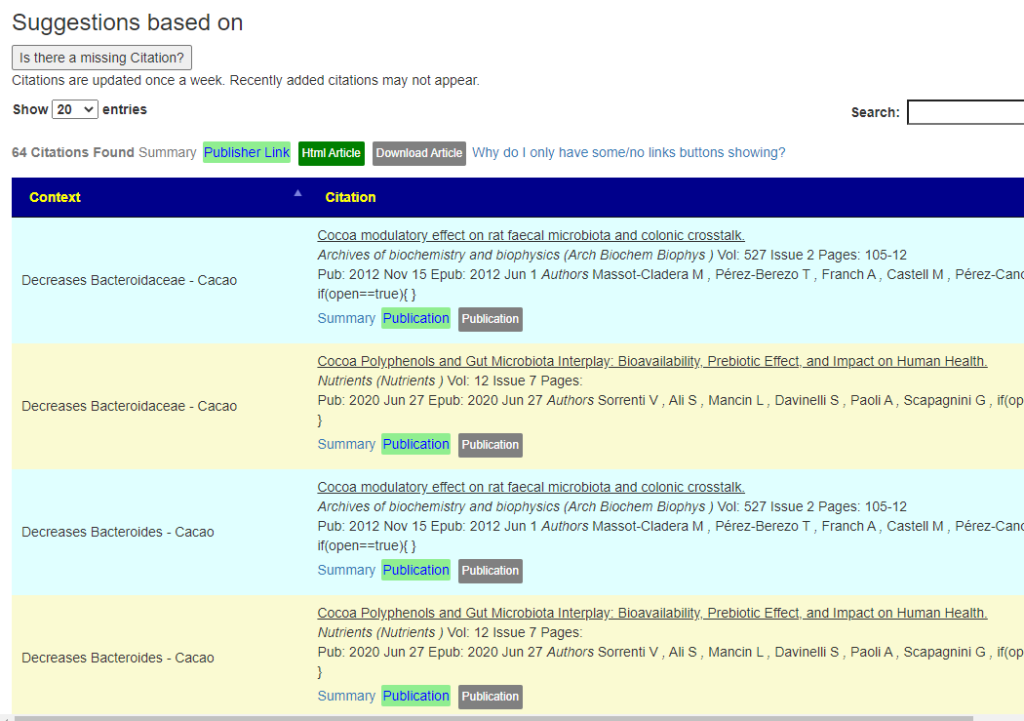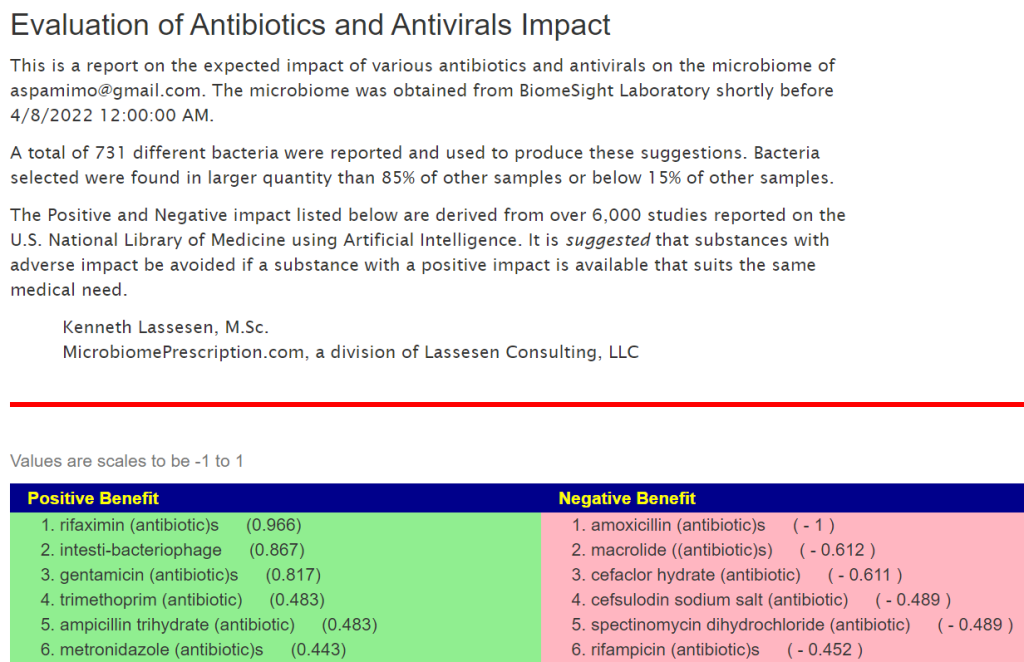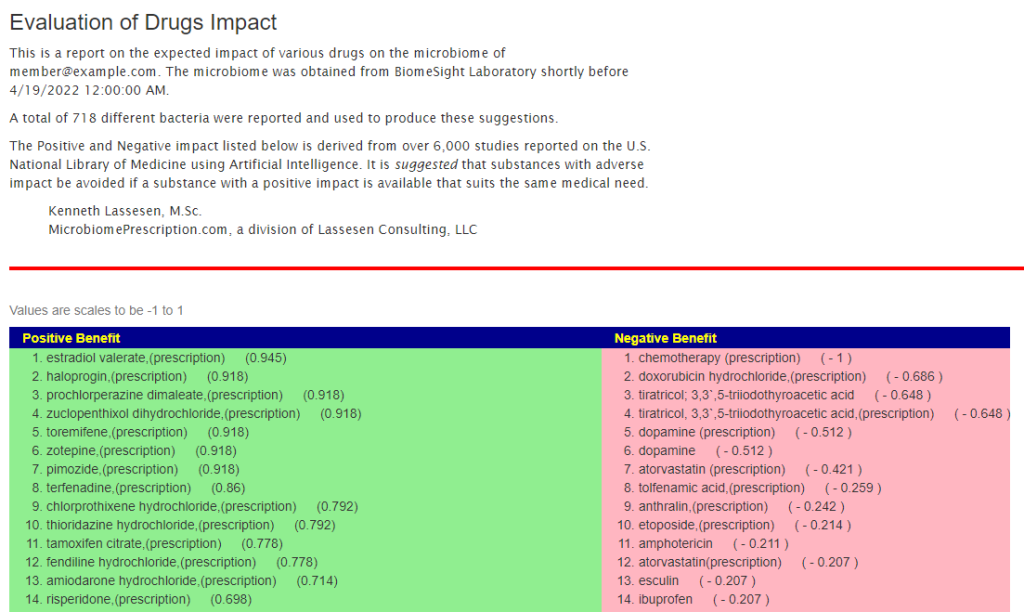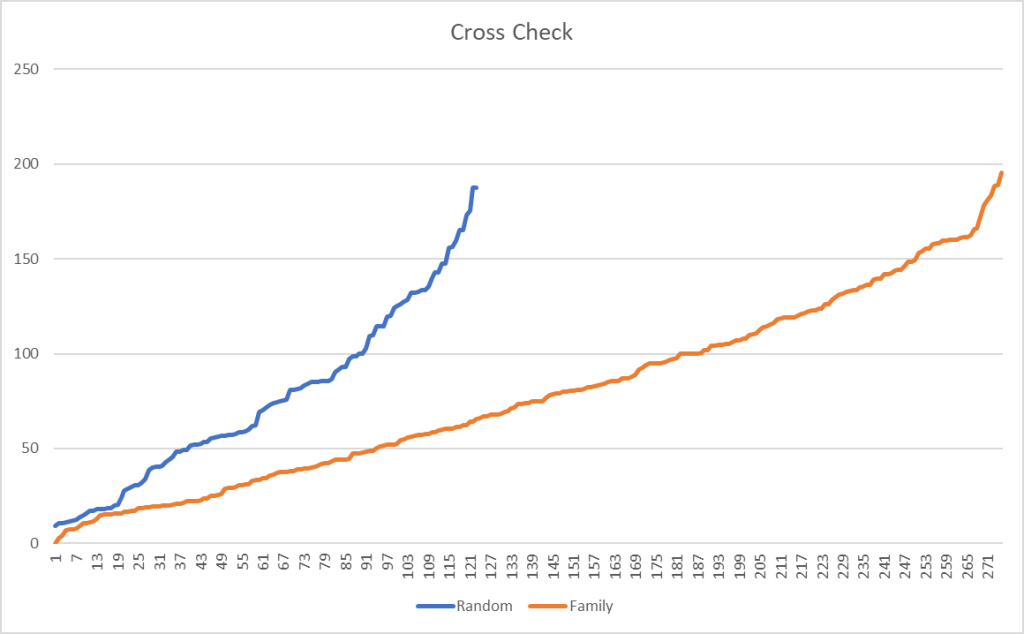Short bio: 35yr Male have had ME/CFS for about 7 years, see A review of a ME/CFS Microbiome for prior review plus backstory. This was my review for “A – Thryve:2021-11-21 self” below.
This person has had done three samples, so we will both look at the latest sample and across samples.
- A – Thryve:2021-11-21 self
- B – Thryve:2022-03-15 self (he used the microbiome prescription site himself to get next course adjustment)
- C – Thryve:2022-05-16 self (this review)
The key questions focus on objective improvement and subjective improvement.
General Health Issues
The evenness of Genus and Species across percentile is shown below
| A | A | B | B | C | C | |
| Percentile | Genus | Species | Genus | Species | Genus | Species |
| 0 – 9 | 11 | 16 | 6 | 9 | 11 | 15 |
| 19-Oct | 12 | 30 | 15 | 30 | 19 | 27 |
| 20 – 29 | 19 | 31 | 20 | 24 | 12 | 31 |
| 30 – 39 | 18 | 35 | 23 | 45 | 16 | 33 |
| 40 – 49 | 16 | 24 | 20 | 37 | 18 | 30 |
| 50 – 59 | 21 | 31 | 25 | 45 | 21 | 33 |
| 60 – 69 | 18 | 20 | 17 | 30 | 14 | 22 |
| 70 – 79 | 16 | 23 | 11 | 28 | 16 | 23 |
| 80 – 89 | 5 | 14 | 16 | 24 | 13 | 21 |
| 90 – 99 | 3 | 14 | 13 | 20 | 5 | 14 |
| Total | 139 | 238 | 166 | 292 | 145 | 249 |
| Std.Dev. | 6.05 | 7.71 | 5.72 | 11.10 | 4.60 | 7.02 |
My reading is that at the Genus level, the microbiome is stablizing. An ideal microbiome would have a Standard Deviation of 0.0 (i.e. the appropriate percentage is in each class). We see for Genus move from 6.0 -> 5.7 -> 4.6. Species have a far greater degree of randomness because may species are not identified, most genus are identified.
Potential Medical Conditions Detected
The count has been similar: A:3 B:6 C:2 with the one items in common being Allergies.
Unhealth Bacteria
The counts were similar between all samples: A:18, B:20, C:21
Dr. Jason Hawrelak Recommendations
We had significant improvement between the first two samples and a slight loss going to the third: A: 56.5%(5) B:95.5% (8) C: 89% (7)
AI Computed Probiotics



AI Suggested Supplements
Using the default 10% level, we found samples A and B only suggested one supplement. C suggested 2 (L-Histidine and manganese). I looked up the item from A and B and saw that it had continued to improve. 🙂
| Supplements | A | B | C |
| beta-alanine | 7.3 | 9.2 | 17.3 |
Has there been positive change?
My reading of the above objective numbers is yes in several vectors. There was nothing show a clear negative change. Somethings stayed put — that is fine, it is small steps. As the picture below illustrates, it is not a direct line/tunnel through the mountain ranges of dysbiosis, we have to work our way across passes and valleys.

The “I don’t feel better” quicksand
I have too often seen — especially with people suffering from Myalgic encephalomyelitis/chronic fatigue syndrome (ME/CFS) — patients giving up on a course of action because they reached a point where they may state “I don’t feel better from doing this, so I am changing…”. For these people, this is often caused by several factors:
- They do not remember how they were actually 2 weeks or 2 months ago…
- Their MD have no objective tests to show progress
- They expect significant constant change constantly (they are frustrated waiting for improvement)
Using the microbiome and repeated testing, they can get objective measurement of changes instead of relying on subjective measurement being done under the influence of brain fog with memory problems.
In this person case, we do see objective improvement of the dysbiosis. What about subjective?
“You’re welcome to mention I have noticed improved sleep and lower anxiety despite my good and bad bacteria shifting around “
From the reader
Moving Forward
As reviewed above, we have no KEGG suggested probiotics, but do have these supplements suggested:
- L-Histidine – Percentile: 2.7
- manganese – Percentile: 3.7
- NADH – Percentile: 15.6 (this has been studied for ME/CFS
- Effect of Dietary Coenzyme Q10 Plus NADH Supplementation on Fatigue Perception and Health-Related Quality of Life in Individuals with Myalgic Encephalomyelitis/Chronic Fatigue Syndrome: A Prospective, Randomized, Double-Blind, Placebo-Controlled Trial, 2021
- Effect of coenzyme Q10 plus nicotinamide adenine dinucleotide supplementation on maximum heart rate after exercise testing in chronic fatigue syndrome – A randomized, controlled, double-blind trial 2015
- Does oral coenzyme Q10 plus NADH supplementation improve fatigue and biochemical parameters in chronic fatigue syndrome? [2014]
- Comparison of oral nicotinamide adenine dinucleotide (NADH) versus conventional therapy for chronic fatigue syndrome [2004]
- Is NADH effective in the treatment of chronic fatigue syndrome? [2000]
- [Nicotinamide adenine dinucleotide (NADH) in patients with chronic fatigue syndrome] [2010]
- Therapeutic effects of oral NADH on the symptoms of patients with chronic fatigue syndrome [1999]
- Chronic lactic acidosis in an adult. A new syndrome associated with an altered redox state of certain NAD-NADH coupled reactions [1970] – this paper was pre ME/CFS existing, but lactic acidosis has been establish as frequently happening with ME/CFS subsequently.
On a personal note, I used NADH during my 1999-2000 relapse (1st time diagnosis). I eventually switched to 400 mg of flushing niacin twice a day (after MD checked my liver function see facts) and have continue to do so (with liver being tested every year).
Getting suggestions based on US National Library of Medicine Studies
As is my pro forma approach, I did each of the following (with number of bacteria picked after):
- Use JasonH (15 Criteria) – 8
- Use Medivere (54 Criteria) – 8
- Use Metagenomics (59 Criteria) – 8
- Use Nirvana/CosmosId (36 Criteria) – 8
- Use XenoGene (22 Criteria) – 8
- Standard Lab Ranges (+/- 2 Std Dev) – 2 (Too High: Bacteroides clarus, Roseburia hominis)
- Box Plot Whisker – 39
- Kaltoft-Moltrup Normal Ranges – 85
- Percentile in top or bottom 10% 69
The new layout of the consensus page is shown below

My suggestion for 3 probiotics to rotate thru are:
- bifidobacterium animalis lactis (probiotics) – the cheapest source (per BCFU) is Custom Probiotics
- Akkermansia muciniphila (probiotic) – the only source is Pendulum
- Any bacillus only probiotic containing bacillus coagulans (probiotics) and Bacillus clausii (Probiotics)
- Many possible products, search this page
For more information on probiotics see the bottom section of this recent review.
For supplements, there are only 3 easily accessed items that are positive, everything else is negative impact!!: Ferric citrate (iron supplement), magnesium (commonly used for ME/CFS) and vitamin k2
For other things, see the video or the suggestions on your microbiome.
Bottom Line
You are making objective progress. A word of caution, if some of the items that you are currently taking on the avoid list, slowly remove them by reducing amount and watching for potential adverse effect. Some of the positive objective changes may be due to them (there is a risk of a feedback loop: if you are taking them, they are not needed BUT it you stop taking them, your microbiome may devolve to a state needing them).
Last – Using Symptoms
This is EXPERIMENTAL. It is a thought experiment and I am still learning it’s behavior. For some symptoms it may reduce awesome results, for others it may improve one set of symptoms at a cost of other symptoms getting worst. I picked two of the more unusual symptoms that he had:
- Comorbid: Methylation issues (MTHFR)
- Immune: Chronic Sinusitis
This resulted in this list being selected with a very strong Filter (first time I have seen this)
| Rank | Name | Your value | Percentile |
|---|---|---|---|
| class | Flavobacteriia | 21 | 7 |
| order | Chromatiales | 21 | 9.4 |
| order | Flavobacteriales | 21 | 7 |
| order | Marinilabiliales | 21 | 13.5 |
| phylum | Tenericutes | 42 | 9.5 |
| species | Bifidobacterium bohemicum | 21 | 11.8 |
| species | Eubacterium ramulus | 8720 | 95.5 |
| species | Prevotella disiens | 946 | 84.1 |
With the top suggestions for this small subset being:
I would suggest using it to increase the priority of some items that are positive suggestions in the consensus list, I would not go with using this set of suggestions alone.
Questions from Reader
- Ferric Citrate , haven’t been able to find this type?
 Have you seen it anywhere? Also how would one figure out the dose for gut bacteria shifting?
Have you seen it anywhere? Also how would one figure out the dose for gut bacteria shifting?- I am an ex-science teacher and thus know it more common name, Iron Citrate. Swanson and others sells it.
- Bacillus- taking terraflora , think I’m up to 6 caps. I saw in a study I need to get to 20 !!
 …I also have prescript on hand BUT that has a lot of other SBO strains. Would you stuck to TERRAflora for now?
…I also have prescript on hand BUT that has a lot of other SBO strains. Would you stuck to TERRAflora for now? - I would keep the Prescript Assist on the shelf, and keep to Terraflora, I would keep increasing the dosage every second day until the bottle was finished. I would look around for ones with similar probiotics for the next cycle, for example Youtheory, Spore Probiotic, 6 Billion CFU, 60 Vegetarian Capsules – for two reasons:
- Cheaper per BCFU (and also higher BCFU per dosage)
- Different strains often helps because they produce slightly different products
- I would keep the Prescript Assist on the shelf, and keep to Terraflora, I would keep increasing the dosage every second day until the bottle was finished. I would look around for ones with similar probiotics for the next cycle, for example Youtheory, Spore Probiotic, 6 Billion CFU, 60 Vegetarian Capsules – for two reasons:
- Miyarisan , I thought I saw this in my results somewhere , maybe it was far down the list…would you save or finish if you had my results?
- It is on the list, I would finish it before starting the next cycle of probiotics (REMEMBER: we want to be rotating the probiotics – not take them continuously)
- It is on the list, I would finish it before starting the next cycle of probiotics (REMEMBER: we want to be rotating the probiotics – not take them continuously)

- Akkermansia – I have 2 bottle of this stuff actually from pendulum . I read you and your wife has taken it. How much did you take or I know it’s a new product but if you’ve seen a study with dosing please let me know.
- The one existing study used 10 BCFU/day, and the bottle reads 0.4 gm. Lacking more information, I would just keep to the bottle recommended dosage.
- NADH- I have the flush stuff and cq10? Do you think that combo works or does it have to be Nadh?
- Personally, I found flush niacin had greater impact and still look forward to my morning flush to get the mind working (it improves oxygen delivery because it’s a vascular dilator). Assuming you can tolerate the flush.
ALWAYS REVIEW WITH YOUR MEDICAL PROFESSIONAL FIRST





















Recent Comments